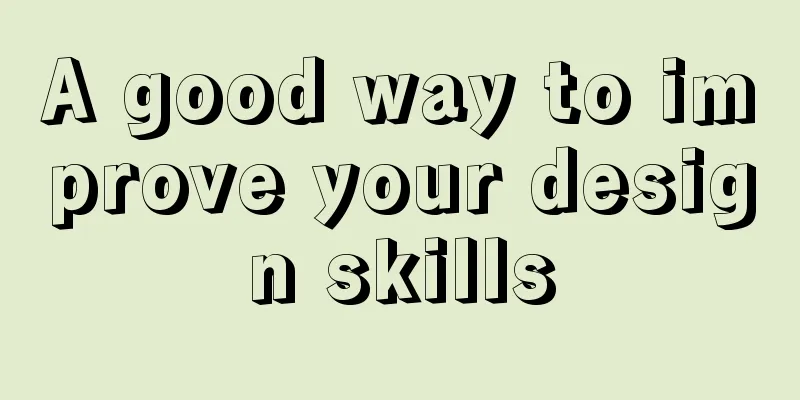SQL to implement time series dislocation restoration case

1. Requirements description1 The STARTDATE of the next row of records in a record of the original table T1 (remembered as r1, the next row is r2) is less than the ENDDATE of the previous row. For such records, the conversion is performed as follows: 2 If there is no "time overlap" in adjacent rows of the original table T1 ( that is, the definition of 1), keep the original data unchanged.
# Text version#T1 seq id startdate enddate num 1 1 2021-04-20 2021-05-03 200 2 1 2021-05-01 2021-05-24 100 3 1 2021-05-18 2021-05-31 69 4 1 2021-05-20 2021-07-31 34 5 1 2021-08-05 2021-08-25 45 6 1 2021-08-15 2021-09-25 65 # Output result ID STARTDATE ENDDATE NUM 1 2021-04-20 2021-04-30 200 1 2021-05-01 2021-05-02 300 1 2021-05-03 2021-05-17 100 1 2021-05-18 2021-05-19 169 1 2021-05-20 2021-05-23 203 1 2021-05-24 2021-05-30 103 1 2021-05-31 2021-07-30 34 1 2021-08-05 2021-08-14 45 1 2021-08-15 2021-08-25 110 1 2021-08-26 2021-09-25 65 2. Overview of ideas 1. Demand extensionSEQ ID STARTDATE ENDDATE NUM 1 1 2021-04-20 2021-05-03 200 2 1 2021-05-01 2021-05-24 100 3 1 2021-05-18 2021-05-31 69 4 1 2021-05-20 2021-07-31 34 Here, the 4th record is superimposed on the 2nd and 3rd records. 2. Overview of ideas 1) T0 is the time series generated by the up and down functions id new_DATE nextSTARTDATE preEndDATE rn 1 2021-05-24 2021-05-03 1 1 2021-05-03 2021-05-24 2021-05-01 2 1 2021-05-01 2021-05-03 2021-04-20 3 1 2021-04-20 2021-05-01 4 2) last retrieves the last record in T0 to prepare for subsequent correction. new_Date preENDDATE id 2021-05-24 2021-05-03 1 3) Normal extracts the records without time overlap in the original data, in preparation for subsequent correction. 4) T_Serial unified the definition of STARTDATE and ENDDATE, and revised T0 for the first time. id STARTDATE ENDDATE 1 2021-04-20 2021-04-30 1 2021-05-01 2021-05-03 1 2021-05-04 2021-05-24 5) T2 corrects the records that do not overlap in time (delete the corresponding value of T0 and update the corresponding ENDDATE). 6) T2 is associated with T1 (original table) and the final value is obtained after aggregation. STARTDATE ENDDATE NUM 2021-04-20 2021-04-30 200 2021-05-01 2021-05-03 300 2021-05-04 2021-05-24 100 3. SQL code The current demo version is MySQL 8.0.23.
DROP TABLE IF EXISTS test_ShenLiang2025;
CREATE TABLE test_ShenLiang2025 (
seq int DEFAULT NULL,
id int DEFAULT NULL,
STARTDATE date DEFAULT NULL,
ENDDATE date DEFAULT NULL,
NUM int DEFAULT NULL
)ENGINE=InnoDB DEFAULT CHARSET=utf8;
INSERT INTO test_ShenLiang2025 VALUES ('1', '1', '2021-04-20', '2021-05-03', '200');
INSERT INTO test_ShenLiang2025 VALUES ('2', '1', '2021-05-01', '2021-05-24', '100');
INSERT INTO test_ShenLiang2025 VALUES ('3', '1', '2021-05-18', '2021-05-31', '69');
INSERT INTO test_ShenLiang2025 VALUES ('4', '1', '2021-05-20', '2021-07-31', '34');
INSERT INTO test_ShenLiang2025 VALUES ('5', '1', '2021-08-05', '2021-08-25', '45');
INSERT INTO test_ShenLiang2025 VALUES ('6', '1', '2021-08-15', '2021-09-25', '65');
Step 1 Build a temporary result set to generate a time series.
WITH T0 AS(
SELECT id,
new_DATE,
LEAD(NEW_DATE,1) OVER (PARTITION BY ID ORDER BY NEW_DATE ) nextSTARTDATE,
LAG(NEW_DATE,1) OVER (PARTITION BY ID ORDER BY NEW_DATE ) preENDDATE,
ROW_NUMBER()OVER(PARTITION BY ID ORDER BY new_DATE DESC) rn
FROM
(
SELECT DISTINCT ID,STARTDATE new_DATE FROM test_ShenLiang2025
WHERE seq in (1,2) -- You can add comments to verify that only two records in the original table are taken.
SELECT DISTINCT ID,ENDDATE new_DATE FROM test_ShenLiang2025
WHERE seq in (1,2) -- You can add comments to verify that only 2 records in the original table are currently taken ORDER BY new_DATE
)A
),last AS
( SELECT new_DATE,preENDDATE,id
FROM T0
WHERE nextSTARTDATE IS NULL
),normal AS
(
SELECT * FROM
(
SELECT id,
ENDDATE,
LEAD(STARTDATE,1) OVER (PARTITION BY ID ORDER BY ENDDATE ) nextSTARTDATE,
LAG(ENDDATE,1) OVER (PARTITION BY ID ORDER BY ENDDATE ) preENDDATE
FROM test_ShenLiang2025
)A
WHERE ENDDATE > preENDDATE AND ENDDATE < nextSTARTDATE
),T_Serial AS (
SELECT ID,ADDDATE(preENDDATE, INTERVAL 1 DAY ) STARTDATE,
new_DATE ENDDATE
FROM last
UNION
SELECT bottom_2.ID,bottom_2.new_DATE STARTDATE,
CASE WHEN rn =3 THEN bottom_2.nextSTARTDATE
ELSE ADDDATE(bottom_2.nextSTARTDATE, INTERVAL -1 DAY ) END ENDDATE
FROM last
JOIN T0 bottom_2
ON bottom_2.nextSTARTDATE<=last.preENDDATE AND bottom_2.id = last.id
),T2 AS(
SELECT B.ID,B.STARTDATE,B.ENDDATE FROM
(
SELECT A.*,ROW_NUMBER()OVER(PARTITION BY ID,STARTDATE ORDER BY ENDDATE) rn
FROM
(
SELECT A.ID,A.STARTDATE,A.ENDDATE
FROM T_Serial A
LEFT JOIN normal B
ON A.STARTDATE = B.ENDDATE AND A.ID = B.ID
WHERE B.ENDDATE IS NULL
UNION
SELECT A.ID,A.STARTDATE,B.ENDDATE
FROM T_Serial A
INNER JOIN normal B
ON ADDDATE(A.ENDDATE, INTERVAL 1 DAY ) = B.ENDDATE AND A.ID = B.ID
)A
)B WHERE rn =1
)
Step2: Associate the time series with the original table to generate the NUM field. SELECT T2.STARTDATE,T2.ENDDATE,SUM(T1.NUM) TOTAL FROM T2 JOIN test_ShenLiang2025 T1 ON T2.STARTDATE>=T1.STARTDATE AND T2.ENDDATE<=T1.ENDDATE GROUP BY T2.STARTDATE,T2.ENDDATE ORDER BY T2.STARTDATE Step 4 View the results
Execution Result:
This concludes this article on the detailed explanation of the SQL implementation case of time series misalignment restoration. For more relevant SQL time misalignment and restoration generation case content, please search for previous articles on 123WORDPRESS.COM or continue to browse the following related articles. I hope everyone will support 123WORDPRESS.COM in the future! You may also be interested in:
|
<<: HTML uses the title attribute to display text when the mouse hovers
>>: Add a floating prompt for the header icon in the ElementUI table
Recommend
MySQL code execution structure example analysis [sequence, branch, loop structure]
This article uses an example to describe the MySQ...
How to solve the phantom read problem in MySQL
Table of contents Preface 1. What is phantom read...
How to solve the problem of Chinese garbled characters when inserting table data into MySQL
1. Problem During development, when inserting dat...
Solution to the 404/503 problem when logging in to TeamCenter12
TeamCenter12 enters the account password and clic...
How to build a DHCP server in Linux
Table of contents 1. Basic knowledge: 2. DHCP ser...
Methods and techniques for designing an interesting website (picture)
Have you ever encountered a situation where we hav...
How to use CocosCreator object pool
Table of contents Preface: Specific operations St...
MySQL 5.6.24 (binary) automatic installation script under Linux
This article shares the mysql5.6.24 automatic ins...
Detailed explanation of the significance of standard commit msg in JavaScript development
Table of contents The significance of standard co...
Detailed explanation of Nginx static service configuration (root and alias instructions)
Static files Nginx is known for its high performa...
A complete list of common Linux system commands for beginners
Learning Linux commands is the biggest obstacle f...
Use js to write a simple snake game
This article shares the specific code of a simple...
Summary of the process and common problems of connecting VS2019 to MySQL database
I started configuring various environments this a...
Overview of the basic components of HTML web pages
<br />The information on web pages is mainly...
Detailed explanation of the parsererror error case in JavaScript solution in ajax
The ultimate way to solve the parsererror error o...











